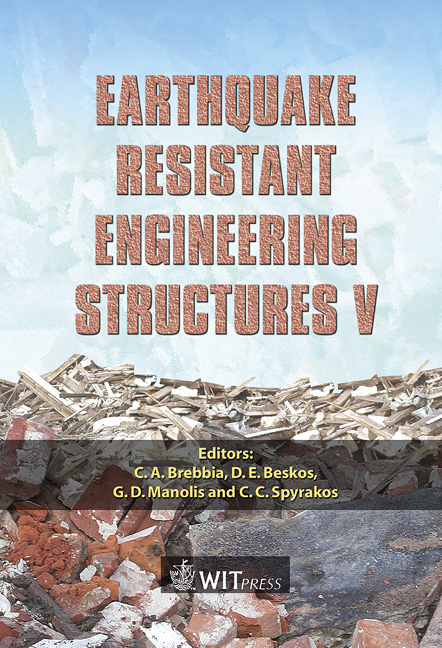Methodology For Design Of Earthquake Resistant Steel Liquid Storage Tanks
Price
Free (open access)
Transaction
Volume
81
Pages
10
Published
2005
Size
401 kb
Paper DOI
10.2495/ERES050641
Copyright
WIT Press
Author(s)
M. A. Haroun & M. A. Al-Kashif
Abstract
Steel shells of cylindrical liquid storage tanks are initially designed using a factor of safety specified in the prevailing code. When the safety of tanks under seismic loading is assessed, the capacity of the shell against buckling is computed. There are two types of shell buckling: membrane and elastic-plastic. Although the latter is not accounted for in most codes, it may limit the seismic design especially at higher values of total liquid pressure. The elastic-plastic buckling capacity is eventually depleted when the ratio of total-to-hydrostatic pressures is equal to the employed factor of safety. Numerous tank dimensions were selected for an extensive parametric study, and such tanks were evaluated under varying earthquake intensities. Tanks with larger height-to-radius ratio when subjected to high peak earthquake accelerations tend to be unsafe, if originally designed under commonly specified factor of safety. A formula is suggested to modify the factor of safety according to the height-to-radius ratio and the expected peak earthquake acceleration. This may form the core for developing enhanced seismic design code methodology for steel liquid-filled tanks. Keywords: shell buckling, hydrodynamic pressure, safety factor, storage tanks, seismic design. 1 Introduction Liquid storage tanks are important elements of lifeline and industrial facilities. The evolution of codes and standards for the seismic design of these structures has relied greatly on observations of tank damages during past earthquakes, yet the time lag between acquiring the information and implementing the findings in practice has remained relatively long. Even though current codes and standards
Keywords
shell buckling, hydrodynamic pressure, safety factor, storage tanks, seismic design.





